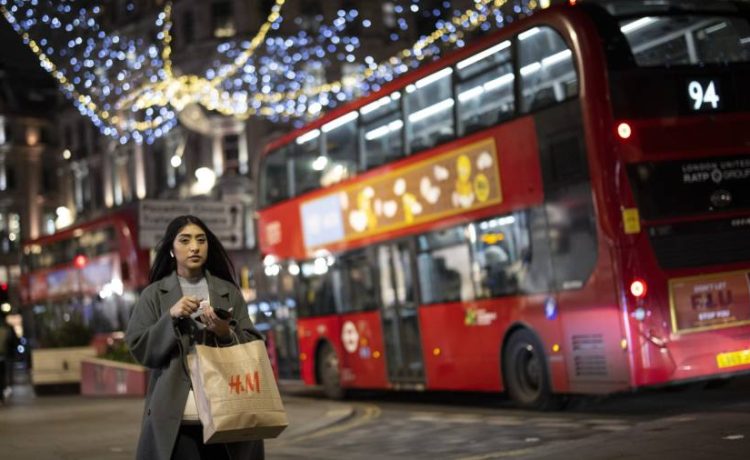It is becoming clear that Christmas 2022 was the festive season where we all paid more but got less.
Perhaps that’s obvious in a time of double-digit inflation. But the UK consumer, collectively, was prepared to stump up to achieve not quite the same present haul or festive spread. That bodes well for retailers’ trading updates next week. But it is a state of affairs unlikely to persist into 2023.
The data was already pointing this way in the run-up to the Christmas break. In November’s retail sales, there was a 3.6 per cent increase in the value of purchases, excluding petrol, compared with a year earlier. That bought the nation’s shoppers 5.9 per cent less in terms of the volume of goods sold. Compare November to February 2020 and the British consumer is handing over 14 per cent more pounds to get basically the same volume of goods.
Heaving tables and expanding waistlines were — from a retail, if not public health perspective — meant to be the bright spot. Grocery took a bigger share of spending as consumers sought to protect their Christmas dinner. In a year when hospitality again suffered because of transport strikes and disruptions, grocery sales in December hit a record £12.8bn, up more than 9 per cent, according to Kantar. But sales by volume still fell 1 per cent, despite increasing trading down to supermarkets’ lower-margin own label products. Mince pie lovers spent 19 per cent more to scoff essentially the same number of treats.
The sense of a last consumer hurrah was reinforced by high street bellwether Next on Thursday. True, the stalwart retailer’s December figures were helped by a rush for coats in the cold snap, and out-of-town stores that benefited in the rail chaos. But fourth-quarter full price sales, up 4.8 per cent, were much better than expected, helping the retailer tweak its forecast for profit before tax for the year to January slightly higher. Discounter B&M’s upgrade to profit forecasts suggested this wasn’t just Next polishing its halo as the UK’s best-run retailer.
Still, the overall message was that customers can’t keep it up faced with high energy bills and rising mortgage costs — with 3-4mn mortgages expected to reset to higher rates this calendar year, according to Shore Capital.
Next, admittedly always cautious, thinks rising prices, sinking sales volumes and affordability pressures will put sales growth into reverse this year. Full price sales in the year to January 2024 are expected to be down 1.5 per cent. Selling prices are projected to rise 8 per cent in the first half of the year and 6 per cent in the second half of the year, while overall volumes are forecast to drop sufficiently to produce £30mn in operational cost savings, about the same as the estimated increase in gas and electricity bills.
One serious unknown is how much of the nation’s festive cheer was enjoyed on tick, putting more pressure on budgets this year. “It might have been a deceptively good Christmas, particularly for the high street retailers helped by colder weather and postal strikes, and fuelled by rising credit card and buy now, pay later spending,” said Kien Tan, retail specialist at PwC. “Either way, there is no question that shoppers will have to rein in discretionary expenditure this year.”
Next’s finance income, from its own credit operations, rose almost 8 per cent in the second half of 2022, growth it expects to stay positive (just) this year. The company put that down to customer balances getting back to normal after debts were reduced during the pandemic.
The Bank of England this week reported a sharp rise in consumer credit in November, explained by higher levels of credit card borrowing. Consumer credit, helped by pandemic savings and low unemployment, has been remarkably resilient in the face of cost of living pressures. But the central bank in December noted increased pressure on households’ ability to handle those debts, especially as mortgage rates reset higher.
The first half of this year still looks a tricky one for retailers and lenders alike.






